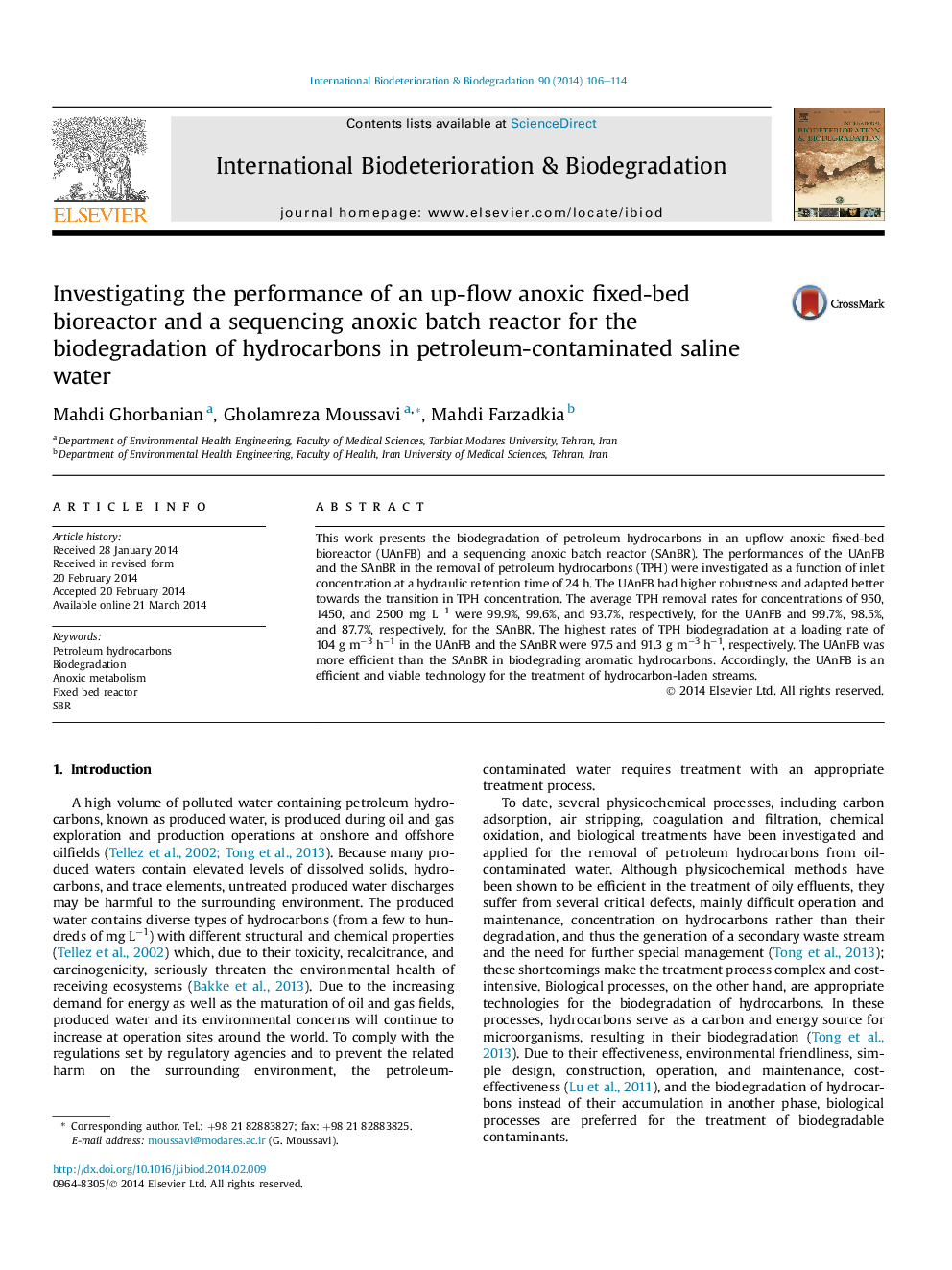| Article ID | Journal | Published Year | Pages | File Type |
|---|---|---|---|---|
| 4364793 | International Biodeterioration & Biodegradation | 2014 | 9 Pages |
Abstract
This work presents the biodegradation of petroleum hydrocarbons in an upflow anoxic fixed-bed bioreactor (UAnFB) and a sequencing anoxic batch reactor (SAnBR). The performances of the UAnFB and the SAnBR in the removal of petroleum hydrocarbons (TPH) were investigated as a function of inlet concentration at a hydraulic retention time of 24 h. The UAnFB had higher robustness and adapted better towards the transition in TPH concentration. The average TPH removal rates for concentrations of 950, 1450, and 2500 mg Lâ1 were 99.9%, 99.6%, and 93.7%, respectively, for the UAnFB and 99.7%, 98.5%, and 87.7%, respectively, for the SAnBR. The highest rates of TPH biodegradation at a loading rate of 104 g mâ3 hâ1 in the UAnFB and the SAnBR were 97.5 and 91.3 g mâ3 hâ1, respectively. The UAnFB was more efficient than the SAnBR in biodegrading aromatic hydrocarbons. Accordingly, the UAnFB is an efficient and viable technology for the treatment of hydrocarbon-laden streams.
Related Topics
Life Sciences
Environmental Science
Environmental Science (General)
Authors
Mahdi Ghorbanian, Gholamreza Moussavi, Mahdi Farzadkia,
